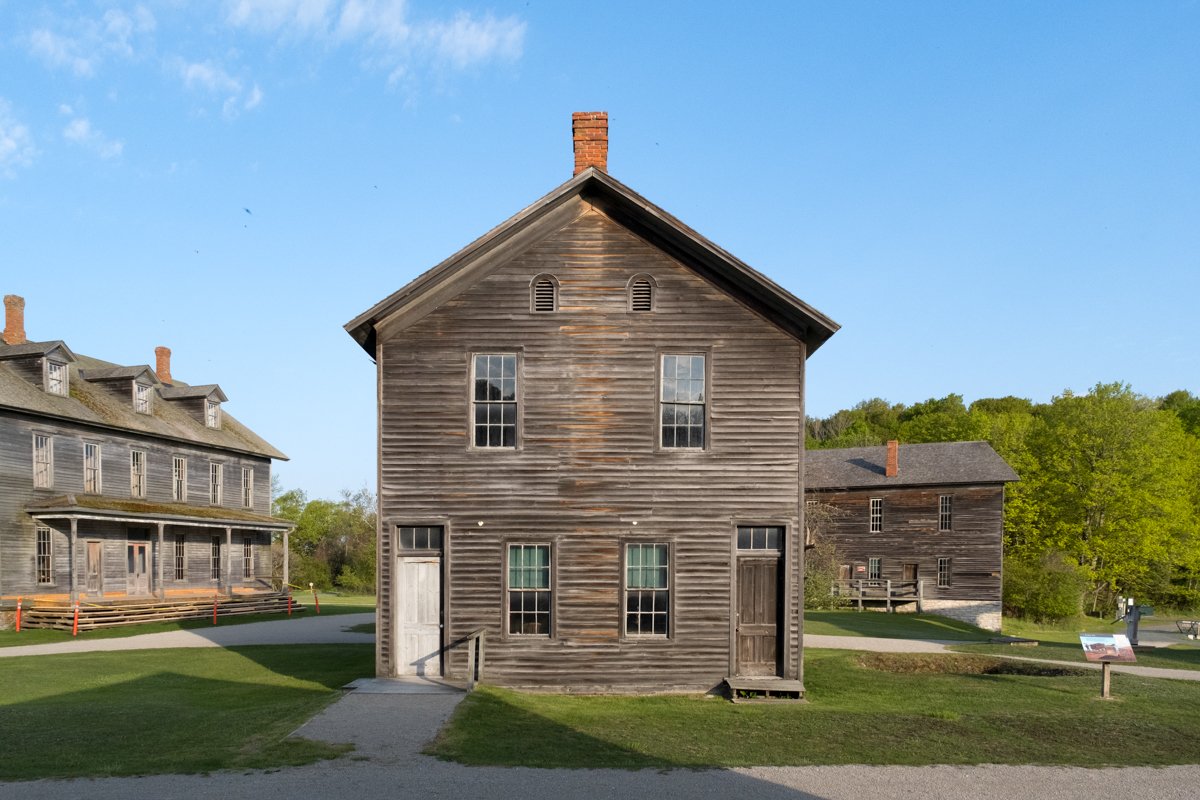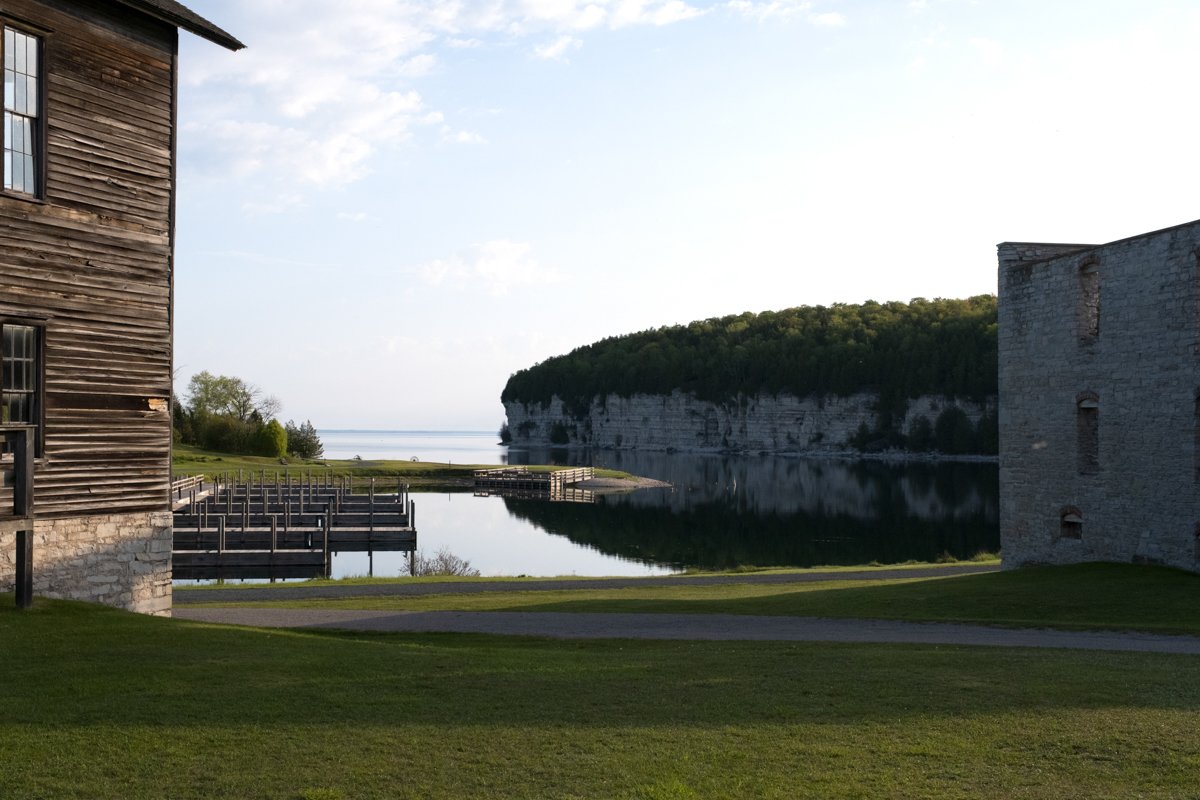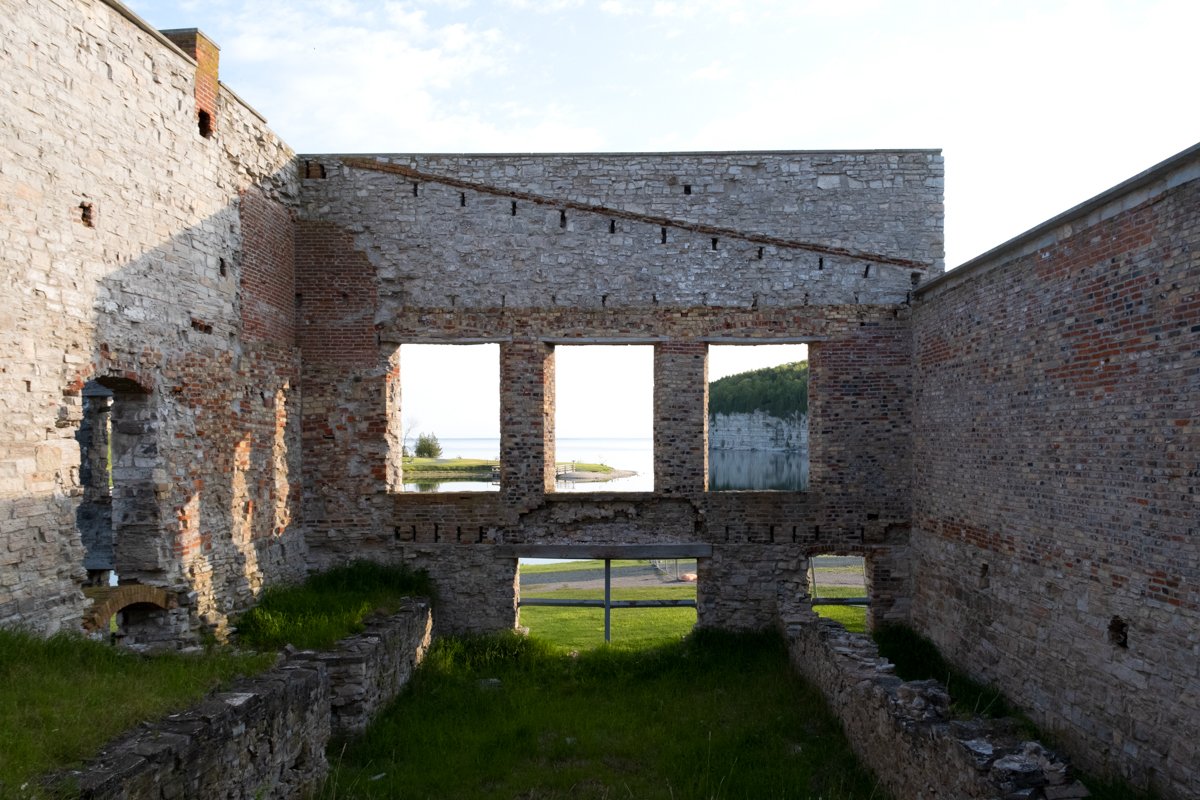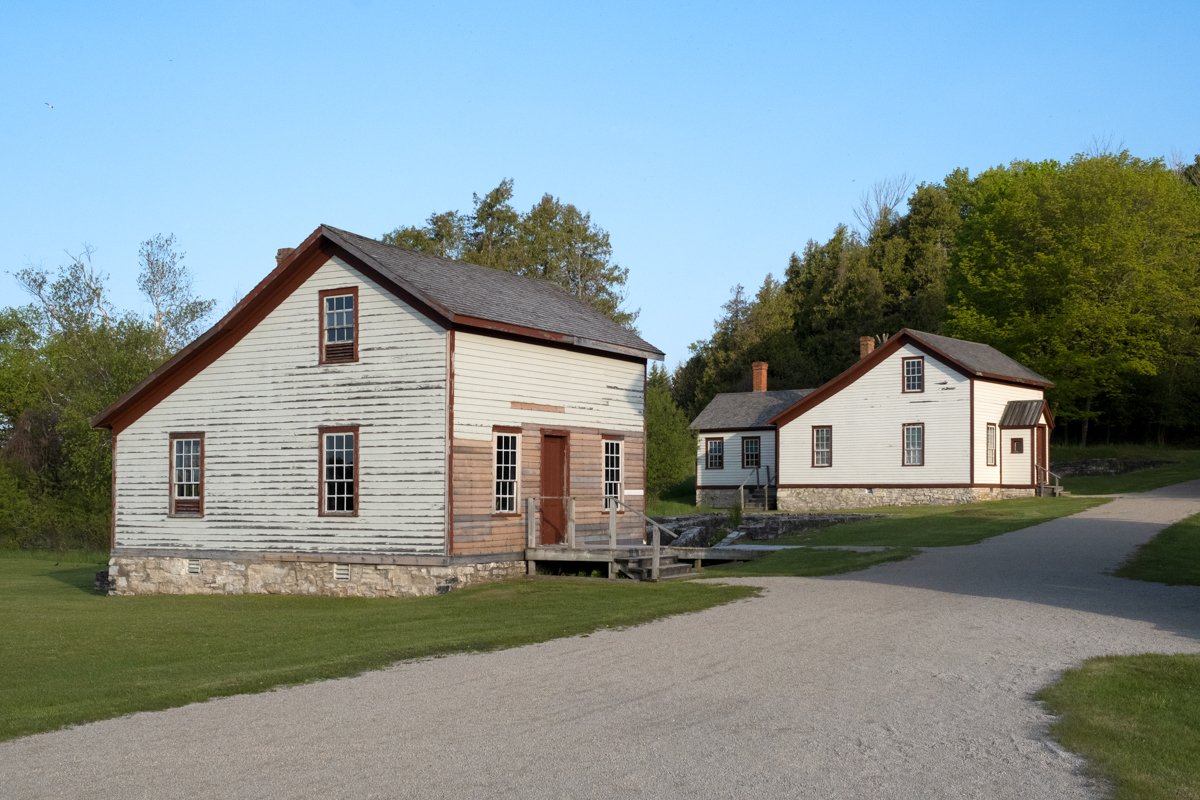Fayette Historic State Park
















The Fayette Historic Townsite is one of the most unique places in Michigan. In the 1800s, Michigan had a lot of boomtowns. Primarily for ore and forestry, these towns popped up around mines, mills, and other temporary manufacturing facilities.
After the trees, ore, or need for a specific industrial facility was gone, the towns mostly disappeared. Some transitioned into other things, like Newberry in the eastern Upper Peninsula and Port Hope in the Thumb, but many sat, decayed, and were eventually demolished. What makes Fayette so iconic is that almost all of the town remains and has been preserved somehow.
Before discussing the park and its amenities, we need to understand the company that built the town: the Jackson Iron Company.
Jump to modern amenities and park description
Founded in Jackson, Michigan, in 1845, the Jackson Mining Company and the businessmen that ran it were determined to find ores in Michigan’s Upper Peninsula. After iron was found near Teal Lake by surveyors, the company sent a group of men to search for the presence of iron near Marquette, which was settled in 1844.
The party utilized the help of a native guide, Marji Gezick (sometimes written Margi Geezic or Maujekijik), to help them find ores, as they were unable to themselves. With his help, the company found iron ore, and the Jackson Mine was born. For his help, Marji Gezick was paid a small sum and “12 undivided thirty-one hundredths parts of the interest of the Jackson Mining Company” for the location where he helped them find iron. This deal was signed and included on the books of the Jackson Mining Company, which would become the Jackson Iron Company by 1849.
When Marji Gezick turned up to be paid his interest, he was denied time and time again. Over that period, the Jackson Mine became very successful, and the town of Negaunee sprung up around the mine. In or before 1857, Marji Gezick died. His daughter, Charlotte Kobogum, found the paperwork he had signed and attempted to get the money that the Jackson Iron Company owed her family, failing two times in the process. Eventually, F.O. Clark took up her case, the former village president of Escanaba, Delta County Prosecutor, and Michigan Legislator. With his help, the duo was able to argue and win the case against the Jackson Iron Company, which had grown into one of the largest in the Upper Peninsula.
The Jackson Iron Company took the suit to the Michigan Supreme Court, where it lost. The payment was estimated to be between $40,000 and $50,000, a lot of money in the 1880s. Robert Traver’s novel Laughing Whitefish is about the case.
Though they had to pay out some cash, the Jackson Iron Company continued to operate and flourish. One week in June 1886, the Jackson Iron Company shipped 1,230 tons of iron. Still, the company could be doing better. Fayette Brown, one of the company’s general managers, chose a site on the Lake Michigan side of the Upper Peninsula to build a smelting operation. The local hardwood forests were used to make charcoal to smelt the iron, and the limestone cliffs nearby were mined to purify the product. From when the smelters opened in 1867 until its closure in 1891, the Fayette operation was one of the most productive in the Upper Peninsula.
The smelting operation provided jobs, which led to other employment opportunities. Men were needed to chop down the hardwood to make charcoal, work in the quarry to mine limestone to be used as a flux to purify the pig iron, and work in the town at the businesses that needed to keep the employees happy when they weren’t at work.
Though production was booming, it wouldn’t last forever. By the 1880s, the Jackson Iron Company was unsure how long their operations in Fayette would last. Smelting haematite into pig iron using charcoal was a dying production method in the Upper Peninsula because most of the hardwood had already been clear-cut. The cost of bringing in charcoal from elsewhere was prohibitive to the operation. Eventually, furnaces would transition to using coke instead. Still, many charcoal furnaces were chosen because of their location near hardwood forests, making them more obsolete than the colossal blast furnaces built in cities like Chicago, Detroit, Cleveland, and Gary.
In May 1883, the furnace in Fayette caught fire. According to the Detroit Free Press, the loss was listed as $200,000, but some thought that was an over-exaggeration. The piece said the furnace would not be rebuilt “as the company contemplated the abandonment of the location.” It appears that it was, considering the facility continued to operate.
On July 4, 1885, the blast furnace at Fayette was shut down, and, at the time, it wasn’t known when it would be up and running again. The company had an excess of pig iron, which was “full up to the door of the leading hotel, and…crowded in all places possible.” Negaunee papers were worried that this might affect their town, as that’s where a large portion of the iron from the mines went.
By November 1887, only five charcoal pig iron furnaces, including Fayette, were left in the Upper Peninsula. The lack of hardwood in the Upper Peninsula was striking, and running the furnaces was becoming cost-ineffective. The furnaces in Fayette were idled in 1891 and were never turned back on.
After closing Fayette, the Jackson Iron Company continued; however, only for a short time. The Jackson Mine, where Marji Gezick had brought the white men decades prior, was starting to run dry. For numerous years in the early 1900s, the mine produced no ores. The Jackson Iron Company went bankrupt in 1904 and was purchased by the Cleveland Cliffs Iron Company in 1905. The mine closed for good in 1924, was named a Michigan State Historic Site in 1956, added to the National Register of Historic Places in 1971, and purchased by the City of Negaunee in 2003. Today, there are trails and parks in the area where the mine was.
Back in Fayette, most of the town disbanded when the company left. Almost everything was owned by the Jackson Iron Company, so when the company left, so did most people and businesses.
Over the years, the townsite was owned by a line of independent individuals and used as a resort and tourist attraction. Though not properly preserved, many of the structures in the townsite still stand today because of this ownership.
On September 10, 1957, the Escanaba Paper Company was the high bidder, offering $11,000 for the Fayette townsite. They didn’t plan to utilize the land, but trade it with the Department of Conservation. The state would get the Fayette Historic Townsite, and the Escanaba Paper Company would receive state timber lands for forestry purposes.
The actual cost of Fayette the Escanaba Paper Company was $30,879.48, as the mortgage on the property was worth $19.711.48. According to the Escanaba Daily Press, “The conservation department seeks Fayette for a park because of its outstanding scenic charm, historical interest, and recreational opportunities.”
In 1959, Fayette became a state park, and various improvements have been made in the decades since. The townsite was designated a Michigan State Historic Site in August 1956 and added to the National Register of Historic Places in 1970.
The Modern-Day Fayette Townsite
Today, most of the standing buildings house museums dedicated to telling the story of Fayette and the industry that built it. Additionally, there are numerous ruins of other structures that were essential to Fayette, like the company store and furnace complex.
A short walk from the townsite is a large parking area with a visitor center and a campground with 60+ sites. The boat dock remains, and you can park your boat there to camp overnight. Slag, a material formed when smelting ores, is commonly found on the shores of the Snail Shell Harbor, and the white cliffs in the distance are a reminder of the limestone that was mined here.
On our first visit to the Fayette Historic Townsite, we arrived early in the morning, so the only person who was there with my dog Scrappy and I was a DNR worker. Because I had a dog with me, I couldn’t go inside any museums, but they’re well worth the trip if you can find someone to hold your dog for you.
There’s a trail connecting the townsite to the campground, which is eerie at night.
There isn’t much like the Fayette Historic Townsite in Michigan, though it can get crowded in the summertime. If you’re looking for a place to unwind after seeing people for too long, check out smaller parks in the area, like Sac Bay County Park or Ozzie Hazen Township Park.
No matter where you go, it is essential to keep our parks in good condition. However, that’s especially true here because this place is so special.
